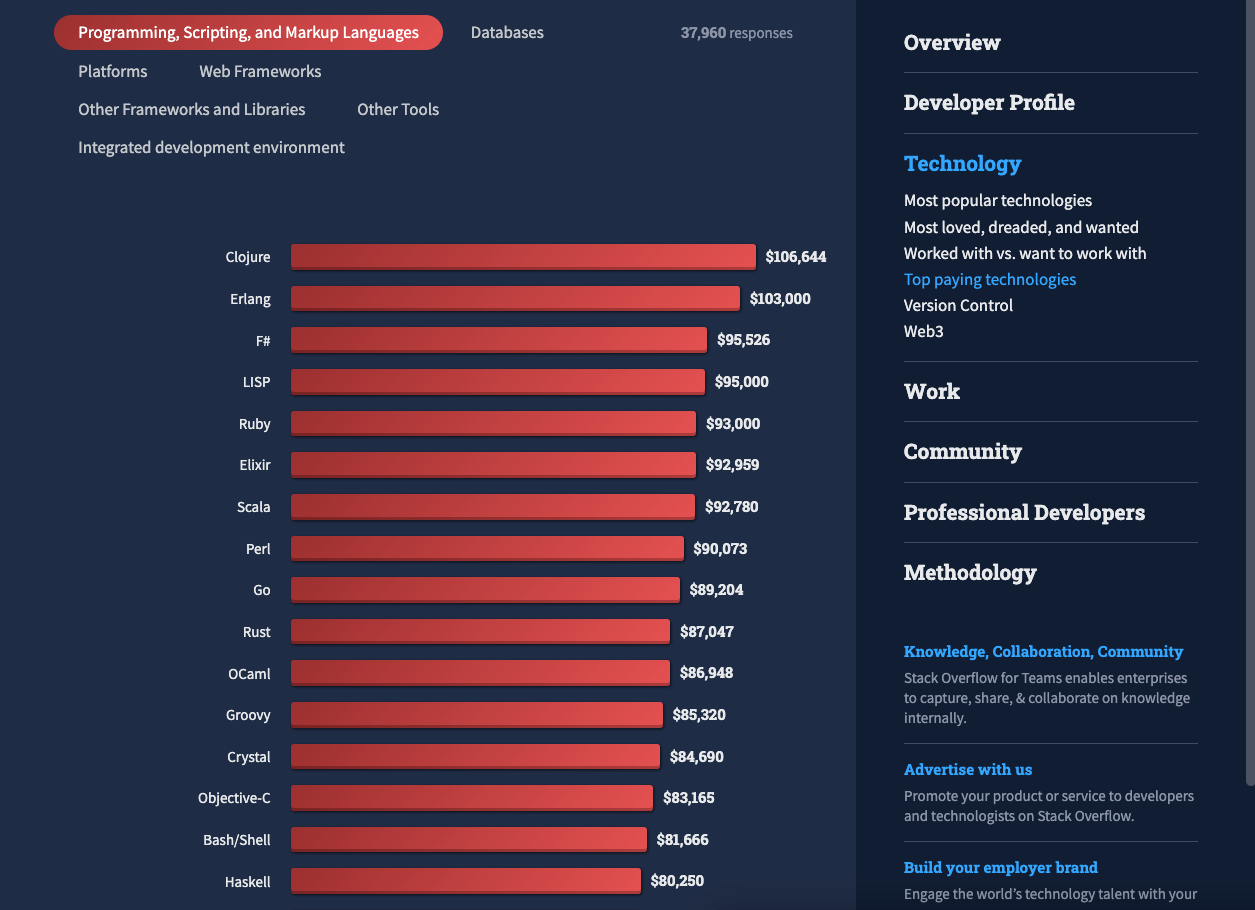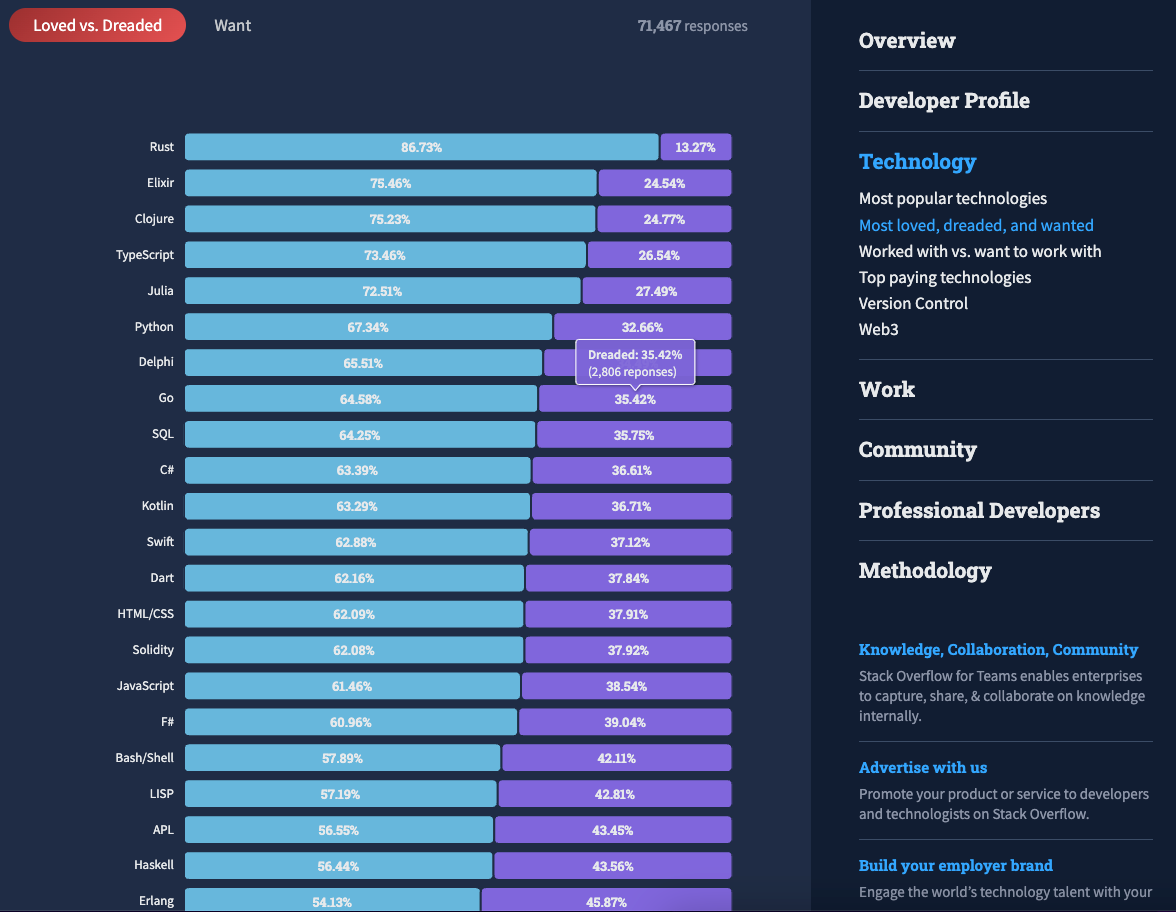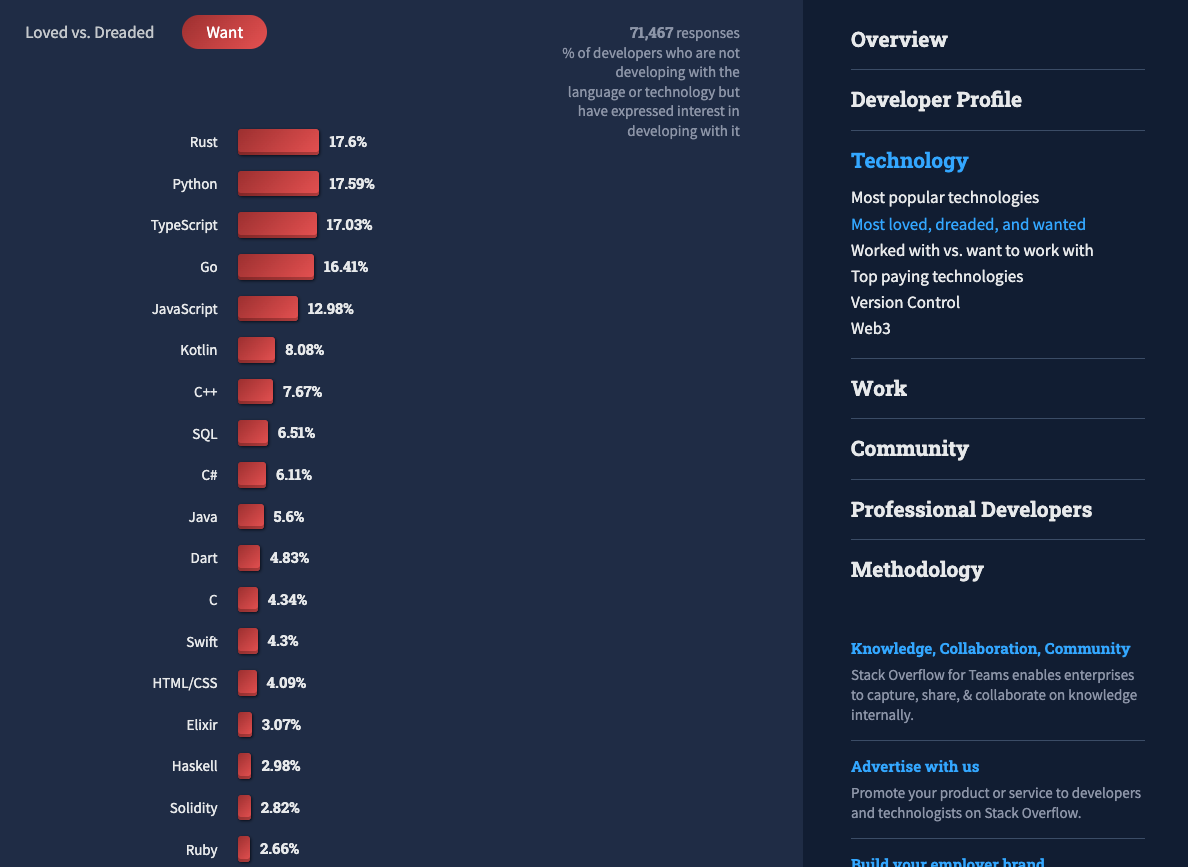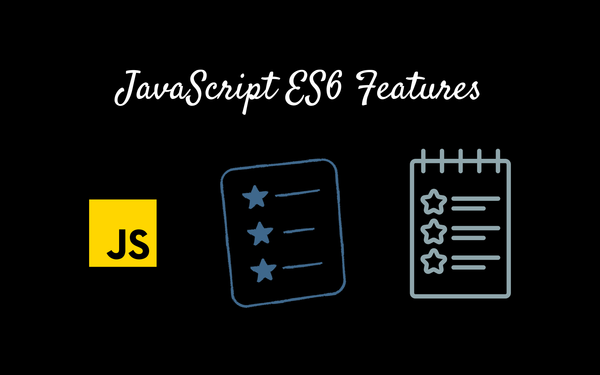Best Programming Language To Learn in 2023

Introduction
This article details the most loved, most paid programming/scripting language according to surveys conducted by Google and StackOverflow.
Learning to code online increased from 60% to 70% year over year. Only 10% worldwide have a college degree, and you don't need one to become a software engineer.
It’s also interesting that we see such variety in how people teach themselves how to code. Written material, various video formats, books, and courses - there’s no one size fits all approach to learning how to code. Everyone can piece together the resources and formats that work best for their learning style.
Let's get started. Are you looking to learn your first programming language?
Or maybe you're looking for the best language to learn to skill up and open up new job opportunities?
Here are the top 10 programming languages. Let's discuss each in detail, including learning difficulty, number of developers using it, popularity, types of projects you can build, and salaries.
Each programming language we discuss here details the following factors:
- Popularity
- Salaries
- Number of Jobs available
- Learning difficulty
- projects you can build
- Community backing
Top paying technologies chart
Clojure remains the highest-paid language to know. Chef developers are the highest paid but Chef is also the most dreaded tool.
Big data and data streaming skills are well compensated with Apache Spark, Apache Kafka, and Hadoop all in the top three other frameworks and libraries.
Additionally, developers that have colocation experience are paid more than their cloud-only counterparts.
The following chart was pulled from StackOverflow-Top Paying Technologies.

Most loved, dreaded, and wanted
Rust is in its seventh year as the most loved language with 87% of developers saying they want to continue using it.
Rust also ties with Python as the most wanted technology with TypeScript running a close second.


Top 10 programming languages
The first two programming languages are too close, either one of them can be on the top of the list. But we preferred Clojure over Rust. As Clojure recently gained more popularity and has gained both developer's and employer's attention.
Companies are adapting to Clojure and the graph is increasing every day.
1. Clojure
Clojure is a robust, practical, and fast programming language with a set of useful features that together form a simple, coherent, and powerful tool.
There are several indicators of Clojure's popularity:
- GitHub: Clojure has over 10,000 repositories on GitHub, which is a significant number compared to other programming languages.
- Stack Overflow: There are over 20,000 questions tagged with Clojure on Stack Overflow, indicating a strong community of developers.
- Job market: There are many job postings that require Clojure skills, especially in the fields of web development, data analysis, and artificial intelligence.
- Conference and meetups: There are many conferences and meetups dedicated to Clojure, which indicates a growing community of developers interested in the language.
- Integration with other tools: Clojure is integrated with many other popular tools and frameworks, including Java, Gradle, and Leiningen.
Overall, while Clojure is not as widely used as some of the more popular languages like Java, Python, and JavaScript, it has a strong and growing community of developers who appreciate its expressive power, simplicity, and performance.
2. Rust
Rust is a multi-paradigm, high-level, general-purpose programming language and memory-safe without garbage collection.
- Rust documentation - Learn Rust.
Rust is a system programming language that was developed by Mozilla and released in 2010. Since then, its popularity has been steadily increasing due to its powerful features and safety guarantees. Here are some indicators of Rust's popularity:
- GitHub: Rust has over 130,000 repositories on GitHub, which is a significant number compared to other programming languages.
- Stack Overflow: There are over 100,000 questions tagged with Rust on Stack Overflow, indicating a strong community of developers.
- Job market: Rust is used by many tech companies and startups, and there are many job postings that require Rust skills, especially in the fields of systems programming, network programming, and game development.
- Conference and meetups: There are many conferences and meetups dedicated to Rust, which indicates a growing community of developers interested in the language.
- Integration with other tools: Rust is integrated with many other popular tools and frameworks, including C/C++, Python, and JavaScript.
Overall, Rust is a rapidly growing programming language with a strong community of developers and a growing presence in many industries. Its unique features, including memory safety and performance, make it an attractive choice for systems programming and other applications where performance and reliability are critical.
3. Elixir
Elixir is a functional programming language that runs on the Erlang virtual machine (VM) and has been gaining popularity since its release in 2011. Its popularity has been growing steadily over the years, and it is widely used in many industries and applications.
Here are some indicators of Elixir's popularity:
- GitHub: Elixir has over 28,000 repositories on GitHub, which is a significant number compared to other programming languages.
- Stack Overflow: There are over 33,000 questions tagged with Elixir on Stack Overflow, indicating a strong community of developers.
- Job market: Elixir is used by many tech companies and startups, and there are many job postings that require Elixir skills, especially in the fields of web development, distributed systems, and real-time applications.
- Conference and meetups: There are many conferences and meetups dedicated to Elixir, which indicates a growing community of developers interested in the language.
- Integration with other tools: Elixir is integrated with many other popular tools and frameworks, including Phoenix, a web framework that has gained a lot of popularity in recent years.
Overall, Elixir is a rapidly growing programming language with a strong community of developers and a growing presence in many industries. Its unique features, including concurrency, fault tolerance, and scalability, make it an attractive choice for building robust and scalable distributed systems.
4. TypeScript
TypeScript is a superset of JavaScript that adds optional static typing and other features to the language. Since its release in 2012, TypeScript has been gaining popularity among developers due to its powerful features and strong community support.
Here are some indicators of TypeScript's popularity:
- GitHub: TypeScript has over 80,000 repositories on GitHub, which is a significant number compared to other programming languages.
- Stack Overflow: There are over 60,000 questions tagged with TypeScript on Stack Overflow, indicating a strong community of developers.
- Job market: TypeScript is used by many tech companies and startups, and there are many job postings that require TypeScript skills, especially in the fields of web development and mobile app development.
- Conference and meetups: There are many conferences and meetups dedicated to TypeScript, which indicates a growing community of developers interested in the language.
- Integration with other tools: TypeScript is integrated with many other popular tools and frameworks, including Angular, React, and Node.js.
Overall, TypeScript is a rapidly growing programming language with a strong community of developers and a growing presence in many industries. Its unique features, including static typing and improved tooling, make it an attractive choice for building robust and scalable web and mobile applications.
5. Python
Python is a general-purpose programming language that has been growing in popularity since its release in 1991. It is widely used in many industries and applications, from web development and data science to machine learning and scientific computing.
Here are some indicators of Python's popularity:
- GitHub: Python has over 1.6 million repositories on GitHub, which is the largest number compared to any other programming language.
- Stack Overflow: There are over 2.5 million questions tagged with Python on Stack Overflow, indicating a strong community of developers.
- Job market: Python is used by many tech companies and startups, and there are many job postings that require Python skills, especially in the fields of data science, machine learning, and web development.
- Conference and meetups: There are many conferences and meetups dedicated to Python, which indicates a growing community of developers interested in the language.
- Integration with other tools: Python is integrated with many other popular tools and frameworks, including TensorFlow, PyTorch, Django, Flask, and NumPy.
Overall, Python is a highly popular programming language with a strong community of developers and a growing presence in many industries. Its easy-to-learn syntax, powerful standard library, and versatility make it an attractive choice for building a wide range of applications.
6. Go
Go, also known as Golang, is an open-source programming language that was developed by Google and first released in 2009. Since then, its popularity has been growing rapidly due to its simplicity, concurrency, and efficient memory management.
Here are some indicators of Go's popularity:
- GitHub: Go has over 800,000 repositories on GitHub, which is a significant number compared to other programming languages.
- Stack Overflow: There are over 100,000 questions tagged with Go on Stack Overflow, indicating a strong community of developers.
- Job market: Go is used by many tech companies and startups, and there are many job postings that require Go skills, especially in the fields of backend development, network programming, and distributed systems.
- Conference and meetups: There are many conferences and meetups dedicated to Go, which indicates a growing community of developers interested in the language.
- Integration with other tools: Go is integrated with many other popular tools and frameworks, including Docker, Kubernetes, and Terraform.
Overall, Go is a rapidly growing programming language with a strong community of developers and a growing presence in many industries. Its unique features, including concurrency and efficient memory management, make it an attractive choice for building scalable and high-performance applications.
7. Kotlin
Kotlin is a general-purpose programming language that was developed by JetBrains and first released in 2011. It is a statically typed language that is designed to interoperate fully with Java and has become increasingly popular in recent years, especially for Android app development.
Here are some indicators of Kotlin's popularity:
- GitHub: Kotlin has over 100,000 repositories on GitHub, which is a significant number compared to other programming languages.
- Stack Overflow: There are over 65,000 questions tagged with Kotlin on Stack Overflow, indicating a strong community of developers.
- Job market: Kotlin is used by many tech companies and startups, especially for Android app development, and there are many job postings that require Kotlin skills.
- Conference and meetups: There are many conferences and meetups dedicated to Kotlin, which indicates a growing community of developers interested in the language.
- Integration with other tools: Kotlin is integrated with many other popular tools and frameworks, including Android Studio, Spring, and Gradle.
Overall, Kotlin is a rapidly growing programming language with a strong community of developers and a growing presence in many industries, especially for Android app development. Its unique features, including null safety, extension functions, and interoperability with Java, make it an attractive choice for building robust and scalable applications.
8. JavaScript
JavaScript is a high-level, dynamic programming language that is widely used for front-end and back-end web development. It was first introduced in 1995 and has since become one of the most popular programming languages in the world.
Here are some indicators of JavaScript's popularity:
- GitHub: JavaScript has over 2.3 million repositories on GitHub, which is the second-largest number compared to any other programming language.
- Stack Overflow: There are over 4.5 million questions tagged with JavaScript on Stack Overflow, indicating a strong community of developers.
- Job market: JavaScript is used by many tech companies and startups, and there are many job postings that require JavaScript skills, especially in the fields of web development and mobile app development.
- Conference and meetups: There are many conferences and meetups dedicated to JavaScript, which indicates a growing community of developers interested in the language.
- Integration with other tools: JavaScript is integrated with many other popular tools and frameworks, including React, Angular, Node.js, and jQuery.
Overall, JavaScript is a highly popular programming language with a strong community of developers and a dominant presence in the web development industry. Its versatility, flexibility, and ease of use make it an attractive choice for building a wide range of applications, from simple websites to complex web applications.




